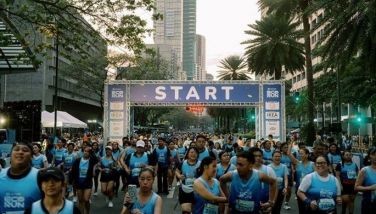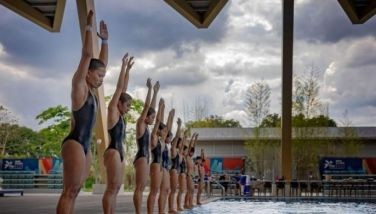The throwback fighter

LAS VEGAS – Freddie Roach recently called Manny Pacquiao the modern-era version of Henry (Homicide Hank) Armstrong who is in the history books as the only fighter to hold world titles in three weight divisions at the same time.
Not that Pacquiao can duplicate Armstrong’s feat. In the pre-war period, fighters were allowed to hold titles in different classes. Today, it is prohibited, more to protect the fighters from engaging in unnecessary mismatches because of the disparity in size.
Armstrong, who fought as a pro from 1930 to 1945, was an incredible human specimen. He registered a record of 149-21-10, with 101 KOs and reigned as world featherweight, lightweight and welterweight champion simultaneously.
Battling heavier opponents never bothered Armstrong. In 1938, he scaled 133 1/2 pounds to wrest the welterweighr crown from Barney Ross, who weighed 142. In 1940, Armstrong checked in at 142 pounds and held Filipino Ceferino Garcia, 153 1/2, to a draw in a world middleweight title bout.
When Armstrong turned pro in 1931, he was 120 pounds. When he retired, he was 141 1/4.
“Meeting bigger boxers was never a problem for Armstrong,” wrote Graham Houston in Boxing Monthly magazine. “He fought a draw with Garcia in a bout recognized as a middleweight title fight in California although in the present era, it would have been a junior welter against a junior middle.”
Houston added: “At one time, it was routine for fighters to give away weight. They thought nothing of it: think of Armstrong or Sugar Ray Robinson in the fights with Jake LaMotta and the lightheavyweight title challenge against Joey Maxim. Most famously of all, middleweight champion Stanley Ketchel went in with heavyweight champion Jack Johnson.”
* * *
In boxing lore, former world heavyweight titlist Bob Fitzsimmons was widely quoted for popularizing the saying, “the bigger they are, the harder they fall.” That was Fitzsimmons’ way of encouraging the small man against the big man. In 1897, Fitzsimmons was 167 pounds when he stopped Jim Corbett, 184, in the 14th round for the world heavyweight crown.
Fitzsimmons, however, failed to turn back a much bigger James J. Jeffries twice. In 1899, Fitzsimmons, 167, was stopped by Jeffries, 206, in the 11th round. And three years later, Jeffries, 219, repeated over Fitzsimmons, 172, to score an eighth round stoppage.
Roach described Pacquiao as a throwback to the old-time scrappers who hardly clinched and gave the fans their money’s worth fight in, fight out.
It was Roach who called out De la Hoya and pricked his macho pride to face Pacquiao at a catchweight limit of 147 pounds. De la Hoya, 35, thought it wouldn’t be a problem scaling down since only last May, he was 150 in beating Steve Forbes. Besides, he figured Pacquiao - who weighed 134 1/2 in his previous outing - wouldn’t be a threat because of the size difference.
De la Hoya took a calculated risk. There was a bundle of money to be made because he wasn’t just a main eventer but also a co-promoter with Top Rank. He sensed Pacquiao would be easy prey in laughing all the way to the bank.
What De la Hoya didn’t consider was Pacquiao’s heart. A lesser man than Pacquiao would’ve shuddered at the thought of jumping two weight classes to lock horns with a legend and Hall of Fame shoo-in.
* * *
Roach’s gamble was the lure of money (or greed) would rattle De la Hoya’s senses. At training camp, De la Hoya tried to turn back the hands of time. He worked hard in the gym and brought down his weight to 145 pounds. News of De la Hoya encountering rough sailing in sparring sessions set an intriguing stage for the fight. Once, De la Hoya emerged from camp with a black eye, courtesy of rising superlightweight star Victor Ortiz.
De la Hoya tried to fight Mother Nature like Morales in the third Pacquiao fight where El Terrible looked like an emaciated prune. He made 147 with two pounds to spare (although it was suspected that the scales were rigged) and checked in for the fight at 147. Curiously, Pacquiao came in at 148 1/2 and outweighed De la Hoya.
Despite the jump to welterweight, Pacquiao was prepared to handle the added poundage. His speed was never compromised. His stamina was superb and it showed in the punch stats. Pacquiao threw 333 punches compared to De la Hoya’s 164 and landed 195 power shots to the Golden Boy’s 51. In the last three rounds, Pacquiao’s advantage in connections was 97-21, indicating De la Hoya faded badly as the fight wore on.
As expected, De la Hoya relied on his jab to try to stave off Pacquiao. He landed 32 jabs to Pacquiao’s 29. Obviously, Pacquiao couldn’t depend on the jab because of his six-inch reach disadvantage. His strategy was to slip De la Hoya’s jab, throw a right to the side of the body then a left straight to the face or chest, moving sideways to his right, turning the Golden Boy around.
Roach’s fight plan neutralized De la Hoya’s size edge as Pacquiao used his dizzying speed not only for offense but also defense. De la Hoya just couldn’t find a standing target as he landed only 21 percent of his punches, compared to Pacquiao’s 38 percent.
Pacquiao was relentless in attacking De la Hoya, putting pressure on his opponent from start to the bitter end. That’s why in Roach’s mind, he isn’t just the world’s No. 1 pound-for-pound champion. He’s also the symbol of a throwback fighter, reminiscent of the long-gone era when Armstrong, Robinson and Ross were kings of the ring.
- Latest
- Trending

























